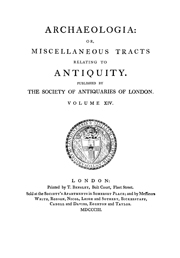Article contents
VIII.—Instances of Orientation in Prehistoric Monuments of the British Isles
Published online by Cambridge University Press: 15 November 2011
Extract
The occurrence of orientation in prehistoric structures has long been noticed. It has not, however, received from investigators much more than a passing comment, such as ‘the barrow is directed to the eastward’, or ‘the entrance to the chamber faces the north-west’. If a definite bearing is given, it is rarely stated whether it is ‘Magnetic’ (such as is obtained from a prismatic compass), or a True Bearing, i. e. an azimuth.
- Type
- Research Article
- Information
- Copyright
- Copyright © The Society of Antiquaries of London 1923
References
1 The actual dates of the present calendar on which the Solstices, Equinoxes, and ‘Half-Quarter-Days’ fall are liable to alteration, owing to the operation of the Gregorian Calendar, through the fact that the Tropical year is not an integral number of days. The Summer Solstice, for example, may fall on 20th, 21st, or 22nd June. For an explanation, the reader is referred to the notes on the ‘Longest Day’, given under the astronomical events for June, in Whitaker's Almanack.
- 6
- Cited by


